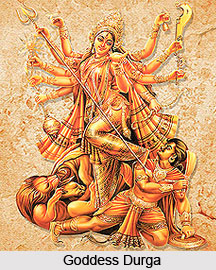 Shakta Tradition in Kerala is a practice in Tantrism which pervades among the Hindus at all levels of society. In Shakta tradition Tantrism conceives female deity as the supreme belief of the universe. In some forms of the Shakta ritual substances which are considered polluting and prohibited in orthodox Brahmanical religion are used. These substances include blood, alcohol, sexual fluids and meat. Shakta ideas are essential for Kerala Hindu worship.
Shakta Tradition in Kerala is a practice in Tantrism which pervades among the Hindus at all levels of society. In Shakta tradition Tantrism conceives female deity as the supreme belief of the universe. In some forms of the Shakta ritual substances which are considered polluting and prohibited in orthodox Brahmanical religion are used. These substances include blood, alcohol, sexual fluids and meat. Shakta ideas are essential for Kerala Hindu worship.
However not much is known about the history of Shakta tradition in Kerala. However, according to some historians Kerala has a strong Shakta and Tantric element in its culture. Shakti is the tutelary deity of Kerala. The three important Tantric pilgrimage places of Mukambika, Hemambika and Kanyakumari which are near to the border of Kerala reveal the influence of Shakta tradition.
In fact Mukambika is considered to be the `elder sister` of Kerala`s Kodungallur Bhagavati. Her shrine is the most important centres of Shakta worship and mysterious practice in south India. The kalam puja that is performed by the Namboothiri priests at the beginning of Mudiyettu has strong Tantric elements like the invocation of the deity through geometric designs, gestures, and mantras and her identification with the priest`s body.
Shakta Tantrism in Kerala is also fundamental to the kalari tradition of the Nayar and Ezhava warriors. Mudiyettu artists earlier were trained in kalaris where along with kalam drawing and physical training, esoteric Shakta teachings were also imparted. Bhagavathy is considered as female aspect of the divine Shakti as conceived by the Shakta tradition of Hinduism. Shakti is the female counterpart without whom the male aspect remains powerless. One of the important aspects of the female divinity is the various Shakti Peethas that are spread across the country.




















